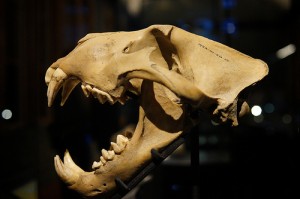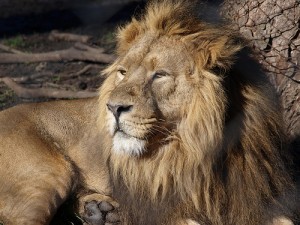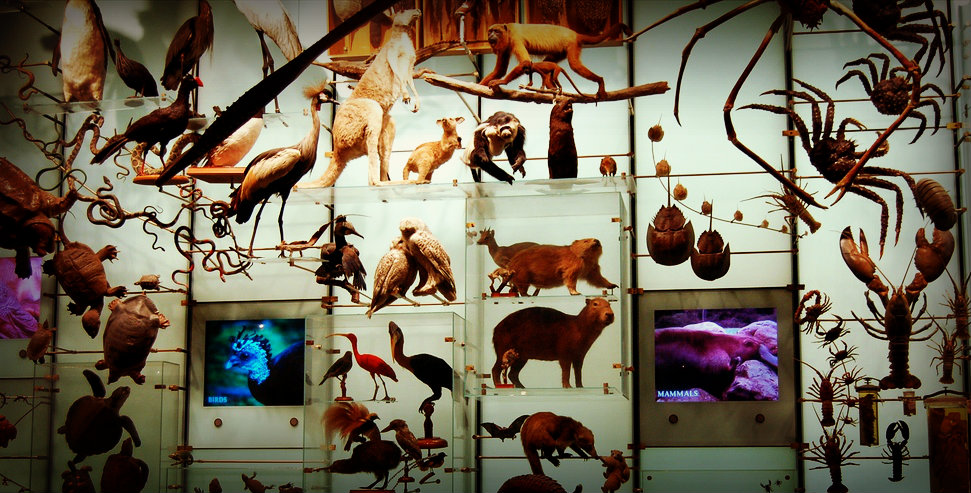Search Results for Tag: diversity
Unraveling a ‘big cat’ DNA mystery
It has all the makings of a historical thriller – scientists in the UK have used the ancient skulls of Barbary lions preserved in the Tower of London to piece together the origin of modern-day big cats. And, they’ve hit upon a vital clue in India which could help resurrect the extinct and majestic Barbary lion of North Africa. First off, what exactly is a Barbary lion? Once found in huge numbers across North Africa, extending from Egypt to Morocco, it had the most spectacular physical features of all lion species. That included an extensive mane, larger body and a more pointed crown and narrow muzzle. Also called the “Atlas lion,” it was reported to have different colored eyes to other lions. Scientists are divided over when and if Barbary lions really went extinct.
The last record of a Barbary lion is an animal shot in Morocco in 1927, though there is circumstantial evidence that Barbary lions may have survived in the wild in the Atlas Mountains till 1942. European zoos have also tended to claim that they have a Barbary lion or two but experts remain skeptical.
Now, a team led by Ross Barnett of Durham University, UK, has discovered that the majestic animal has close genetic links to the Asiatic lions that live in India. (Less than 400 Asiatic lions survive at present on the Kathiawar Peninsula of India and the species is listed as endangered by the International Union for the Conservation of Nature.)
Barnett’s team came to that conclusion after scientists sequenced mitochondrial DNA from museum-held specimens and from Barbary lion skulls discovered preserved in the Tower of London’s moat and believed to date back to the 14th and 15th century. The study was published in the journal BMC Evolutionary Biology. Barnett said he was surprised by the incredibly close relationship between the extinct Barbary lion from North Africa and the Asiatic lion from India. This, he said, could now get conservationists talking about resurrecting the subspecies and reintroducing lions into North Africa. “This has implications for any future attempts to reintroduce lions into North Africa,” Barnett said. “They could probably be re-seeded with Indian lions.” The researchers compared their findings with genetic sequences drawn from other lions living in Asia and across Africa to work out different subspecies of lion evolved. Their work shows that the single species of modern lions’ most recent common ancestor lived around 124,000 years ago.
Nature and Culture: Diversity rules
Relax. Breathe. Feel your pulse. Is it regular? Good. Because that, of course, is why you are alive. It shouldn’t be monotonous though. That could mean you might be in trouble soon. It’s a startling discovery scientists made back in the 1990s: A heart that beats with little variability can herald anything from cardiovascular disease to cognitive problems – even heart attacks. Variation, in other words, is key for life. Love or hate that metaphor – but this idea that variation and diversity are not merely coincidental but fundamental to live is what ties nature to us humans.
Cultural diversity is shaped by biodiversity. That’s what experts say, who have started to look at this connection in greater detail over the last years:
Nature and culture converge on many levels that span values, beliefs and norms to practices, livelihoods, knowledge and languages. As a result, there exists a mutual feedback between cultural systems and the environment, with a shift in one often leading to a change in the other. [For instance,] If plants or animals are lost then the words used to describe them are often lost from a language shortly after
Ok, that gives an impression of how cultural and biological diversity are connected. But why is that diversity important? An ecosystem that is more diverse is better able to adapt to or survive massive disturbances, i.e. anything from natural disasters to fungal infestations to “human disturbance”. Or conversely, if mono cultures get hit by disasters it can be catastrophic. A single type of bug has the potential to wipe out whole crops, for instance, if they consist of plants that happen to be susceptible to the intruder. The present crisis faced by the global banana industry is a good example. So, in short: If it’s more diverse it’s more robust.
But it is just that resilience and durability of local landscapes, forests, lakes, plant and animal life that provided the stable setting in which humans could develop their culture and cultures in all their facets. Social scientists say that, similarly, this cultural diversity makes societies more robust, too:
Cultural diversity, and the knowledge, innovations and outlooks it contains increases the capacity of human systems to adapt and cope with change.







Feedback